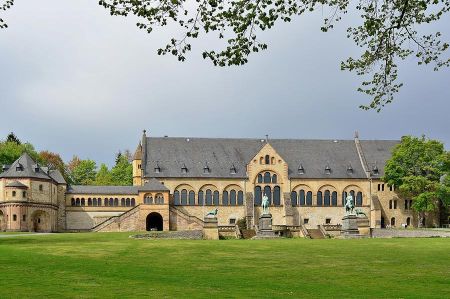Goslar - old town with narrow streets and half-timbered houses
- Written by Portal Editor
During our stay in the Harz mountains, Prahljust campsite near Clausthal-Zellerfeld served us as a starting point for various hikes but also for longer bike tours, so we decided to take a trip to Goslar to finally visit the Imperial Palace.
The starting point in Goslar should be the market square, as there are also numerous parking spaces for e-bikes.
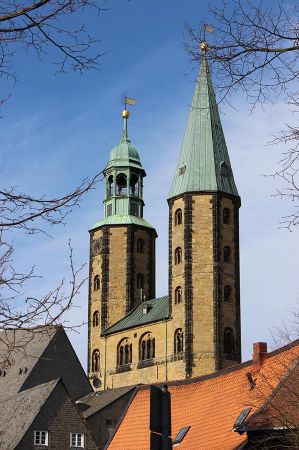 If you would like to go on a similar tour, we recommend that you go down the path in a way that conserves your battery (which is quite easy since it is mostly downhill), because the way back is tough (mostly uphill).
If you would like to go on a similar tour, we recommend that you go down the path in a way that conserves your battery (which is quite easy since it is mostly downhill), because the way back is tough (mostly uphill).
So we missed the chance to reload the batteries in Goslar and then had to manage a good 6 kilometres to Clausthal-Zellerfeld without engine support.
It worked, but it was very tiring, especially since the forest paths were very rutted.
But now back to the old imperial city of Goslar.
Tour through the streets of the old town with its half-timbered houses
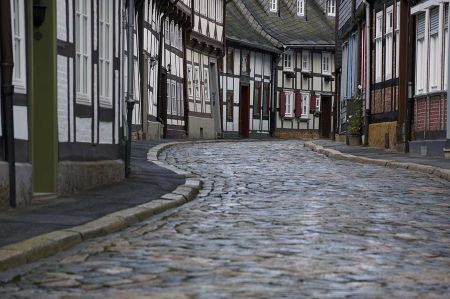 From the market square we stroll through the partly narrow cobblestone streets to the nearby Schuhhof - Goslar's oldest square. The square is lined with numerous medieval houses. Whether the house of the bakers' guild, the Röver bower or the Great Holy Cross: every building has its own story.
From the market square we stroll through the partly narrow cobblestone streets to the nearby Schuhhof - Goslar's oldest square. The square is lined with numerous medieval houses. Whether the house of the bakers' guild, the Röver bower or the Great Holy Cross: every building has its own story.
At the market square you can say you already have both feet in the Middle Ages. Not far from the market is the so-called Siemens House from 1693, the headquarters of the world-famous industrial family.
Former centre of power: The Imperial Palace of Goslar
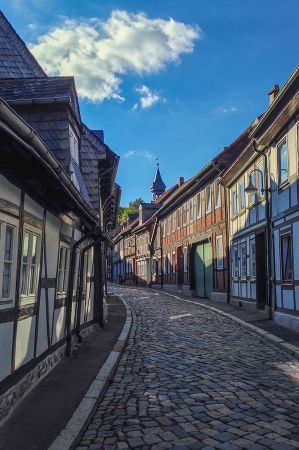 We move on towards the Imperial Palace, which once served as a meeting point and meeting place for the world's greats, built between 1039 and 1056 under Henry II. Just a few steps from the centre, the imposing Romanesque building of the Imperial Palace sits on a hill. Certainly still known from history lessons, in the Middle Ages the rulers moved from Palatinate to Palatinate as itinerant emperors, because no city could supply the court all year round. Heinrich II had the castle-like palace complex in Goslar. Built in the 11th century and made the place an important centre of power. In the Middle Ages, court days and imperial assemblies took place in the imperial palace. Today the building houses a museum.
We move on towards the Imperial Palace, which once served as a meeting point and meeting place for the world's greats, built between 1039 and 1056 under Henry II. Just a few steps from the centre, the imposing Romanesque building of the Imperial Palace sits on a hill. Certainly still known from history lessons, in the Middle Ages the rulers moved from Palatinate to Palatinate as itinerant emperors, because no city could supply the court all year round. Heinrich II had the castle-like palace complex in Goslar. Built in the 11th century and made the place an important centre of power. In the Middle Ages, court days and imperial assemblies took place in the imperial palace. Today the building houses a museum.
Rammelsberg ore mine: living museum
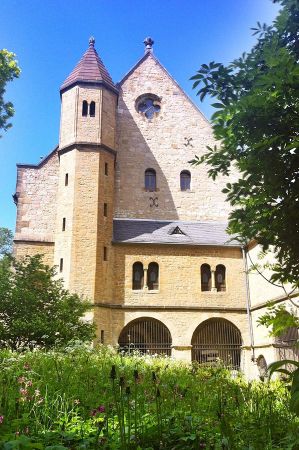 Immediately behind the Imperial Palace lies the Rammelsberg, which is more than 600 meters high. The former ore mine was the first industrial monument in Germany to be declared a world heritage site by UNESCO. The people of Rammelsberg were mining as early as 3,000 years ago, and systematic ore extraction began around 1,000 years ago under the rule of the Ottonians. The mine was only closed in 1988. Today the complex consists of a large museum and a visitor mine, which are worth a visit because visitors can explore a completely preserved original location.
Immediately behind the Imperial Palace lies the Rammelsberg, which is more than 600 meters high. The former ore mine was the first industrial monument in Germany to be declared a world heritage site by UNESCO. The people of Rammelsberg were mining as early as 3,000 years ago, and systematic ore extraction began around 1,000 years ago under the rule of the Ottonians. The mine was only closed in 1988. Today the complex consists of a large museum and a visitor mine, which are worth a visit because visitors can explore a completely preserved original location.
Imperial Palace, ore mines and lots of half-timbered buildings: evidence of Goslar's long history is visible everywhere on our tour. A visit to the UNESCO World Heritage city is worth it for everyone.
Please read well:
Notre-Dame de la Garde – “The Good Mother”
Busking – a little stopover at the port of Marseille
-
 Goslar at the Harz Mountains - worth a Visit
Goslar at the Harz Mountains - worth a Visit
Goslar at the Harz Mountains - worth a Visit
Goslar at the Harz Mountains - worth a Visit
-
 Goslar at the Harz Mountains - worth a Visit
Goslar at the Harz Mountains - worth a Visit
Goslar at the Harz Mountains - worth a Visit
Goslar at the Harz Mountains - worth a Visit
-
 Goslar at the Harz Mountains - worth a Visit
Goslar at the Harz Mountains - worth a Visit
Goslar at the Harz Mountains - worth a Visit
Goslar at the Harz Mountains - worth a Visit
-
 Goslar at the Harz Mountains - worth a Visit
Goslar at the Harz Mountains - worth a Visit
Goslar at the Harz Mountains - worth a Visit
Goslar at the Harz Mountains - worth a Visit
-
 Goslar at the Harz Mountains - worth a Visit
Goslar at the Harz Mountains - worth a Visit
Goslar at the Harz Mountains - worth a Visit
Goslar at the Harz Mountains - worth a Visit
-
 Goslar at the Harz Mountains - worth a Visit
Goslar at the Harz Mountains - worth a Visit
Goslar at the Harz Mountains - worth a Visit
Goslar at the Harz Mountains - worth a Visit
-
 Goslar at the Harz Mountains - worth a Visit
Goslar at the Harz Mountains - worth a Visit
Goslar at the Harz Mountains - worth a Visit
Goslar at the Harz Mountains - worth a Visit
-
 Goslar at the Harz Mountains - worth a Visit
Goslar at the Harz Mountains - worth a Visit
Goslar at the Harz Mountains - worth a Visit
Goslar at the Harz Mountains - worth a Visit
-
 Goslar at the Harz Mountains - worth a Visit
Goslar at the Harz Mountains - worth a Visit
Goslar at the Harz Mountains - worth a Visit
Goslar at the Harz Mountains - worth a Visit
https://www.alaturka.info/en/germany/lower-saxony/6622-goslar-old-town-with-narrow-streets-and-half-timbered-houses#sigProId83f6bb5a04
